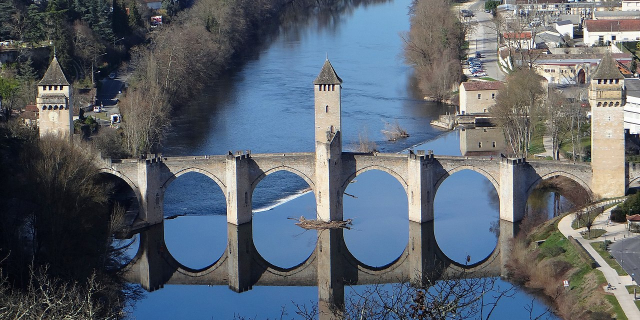Penne (Tarn)
( Penne, Tarn )Penne (French pronunciation: [pɛn] ; Occitan: Pena, meaning 'feather') is a commune in the Tarn department in the Occitanie region in Southern France. In 2018, it had a population of 584. Penne is situated 32 km (19.8 mi) to the east of Montauban, on the Aveyron River.
In the absence of literary works describing this little-known village, indications of its medieval character can be found in various travel articles and guides, such as the Penne Tourism and Holiday Guide which states:
The village extends along the rocky outcrop under the protection of its medieval castle ... The village has retained its authenticity, its narrow streets lined with timbered houses and wooden corbels, ancient grain measures, its Androne, its mullioned windows and doors.
The mountainous and hilly terrain, coupled with poor soil, make for a local economy that is precarious. Younger generations continually move away from the area, to make a better living in Paris and other major cities.[1]
In the 21st century, the industry of tourism in Tarn appears to have stemmed the decline in the Penne population to some extent, as statistics show a small increase over ten years: from 552 inhabitants in 2007 to 576 in 2017.[2]
Bronze Age site Bronze Age bead necklace, Penne, Tarn
Bronze Age bead necklace, Penne, TarnThe first archaeological finds indicating human activity in the Languedoc region date back to the Holocene Bronze Age, 1800–1500 BC, according to Bilotte, Duranthon and Palevol.[3]
In 2006 these writers revived interest in the work of scientist Jean-Baptiste Noulet (1802–1890), who had explored the Tarn area in the mid-19th century and found evidence of human habitation in many of the caves there. Working in Penne in 1851, within a cave known as Le Cuzoul d'Armand or Grotte Mazuc, Noulet found several prehistoric artifacts, including a bronze and pearl necklace, now held in the Noulet Collection at the Muséum de Toulouse.[4]
Medieval fortified villageAccording to the historical account on the Southwest Story web site, "the first reference to a castle in the village of Penne dates from 825 AD and its first known señor was Geoffroi, mentioned in 1096 in documents related to Raymond, Count of Toulouse".[5]
Throughout the Middle Ages (5th to 15th centuries) the site of Penne was of military strategic importance, being situated on the borders of the provinces of Albigeois, Quercy and Rouergue, with its fortress perched atop a cliff overlooking the River Aveyron. As such, it was frequently the target of attack, most notably during the Albigensian Crusade, a twenty-year military campaign (1209–1229) initiated by the King Philip II of France and the Roman Catholic Pope Innocent III.[6] Ostensibly, the objective of the crusade was the elimination of all Cathars in Southern France, but this coincided with the French King's political ambition to annex this area to his northern territories.[7] People who adhered to Catharic principles were held to be anti-Catholic heretics; as narrated by McCaffrey, "their treatment was savage and merciless – heretics and their sympathisers were often either slaughtered or burned alive at the stake".[8]
The castle remained in use, seeing repeated conflicts, such as the Hundred Years War (1337–1453) between England and France, as well as the French Wars of Religion (1562–1598) between Protestants and Roman Catholics during which it was partly destroyed. It was then abandoned for approximately 400 years.[9]


Interest in the village's architecture and history was re-ignited in 1902 when the castle was officially declared to be a monument historique of France, after which restoration of the ruins began; the work is still ongoing. The remains of the castle include the dungeon, the ramparts and a chapel. The Castle of Penne is open to the public from mid-February until mid-November each year, with educational events and pageants being performed in July and August.

































Add new comment